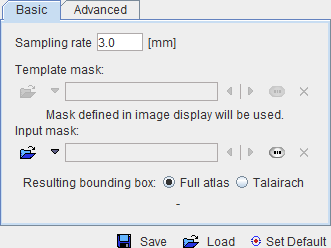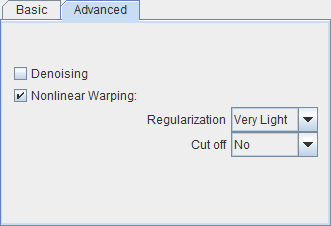The probability maps normalization is based on PMOD's Java implementation of the Unified Segmentation methodology developed by Ashburner et al [11]. The following parameters allow fine-tuning the basic procedure.


Basic Parameters
Sampling rate |
Pixel sampling rate for the calculation. |
Advanced Parameters
The Advanced parameters are usually only changed if a normalization fails or if the user aims at a specific effect.
Denoising |
Image denoising prior to the normalization using the fast Non Local Means Analysis method with "low" setting. |
Nonlinear |
Enable nonlinear warping in addition to the affine transformation. Regularization: "The objective function for registering the tissue probability maps to the image to process, involves minimising the sum of two terms. One term gives a function of how probable the data is given the warping parameters. The other is a function of how probable the parameters are, and provides a penalty for unlikely deformations. Smoother deformations are deemed to be more probable. The amount of regularisation determines the tradeoff between the terms. Pick a value around one. However, if your normalised images appear distorted, then it may be an idea to increase the amount of regularisation (by an order of magnitude). More regularisation gives smoother deformations, where the smoothness measure is determined by the bending energy of the deformations." Bias regularisation in [12]. Cut Off: "Cutoff of DCT bases. Only DCT bases of periods longer than the cutoff are used to describe the warps. The number actually used will depend on the cutoff and the field of view of your image. A smaller cutoff frequency will allow more detailed deformations to be modelled, but unfortunately comes at a cost of greatly increasing the amount of memory needed, and the time taken." Bias cut off in [12] |